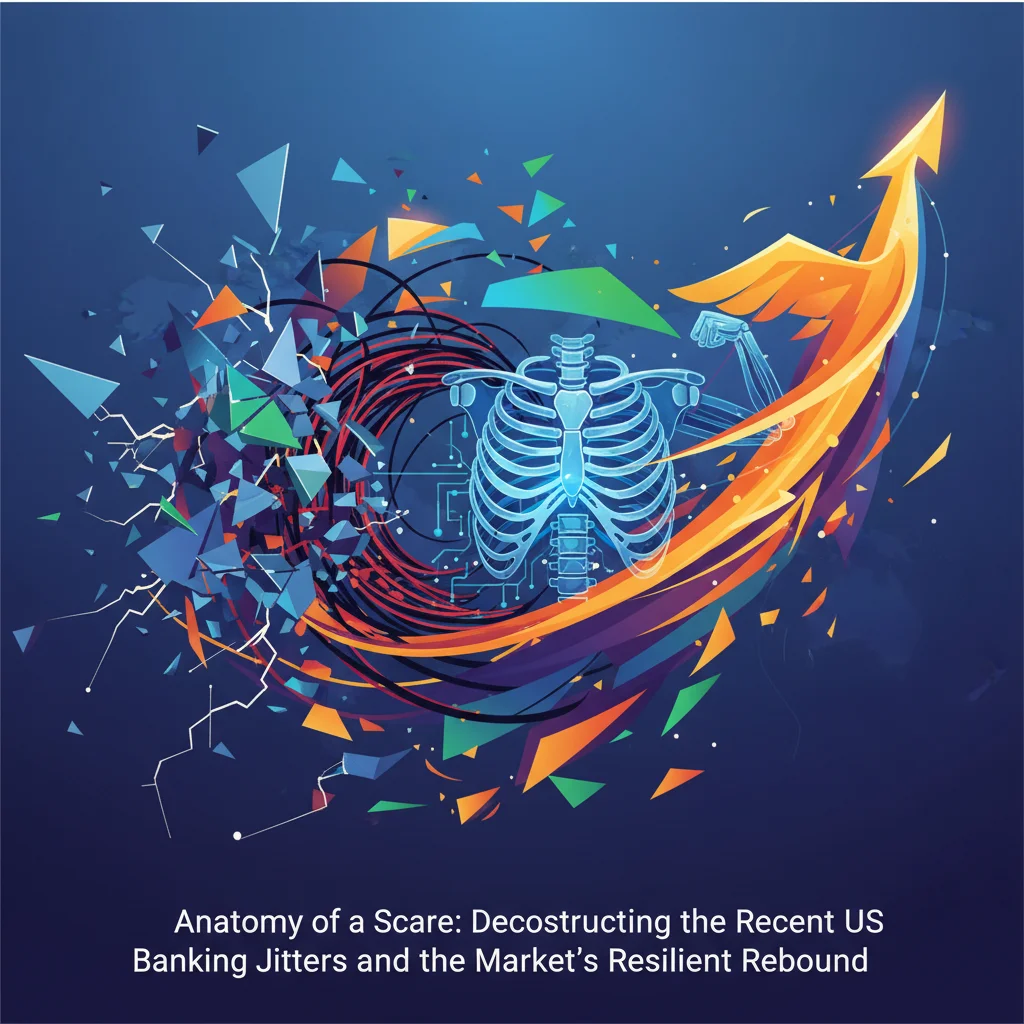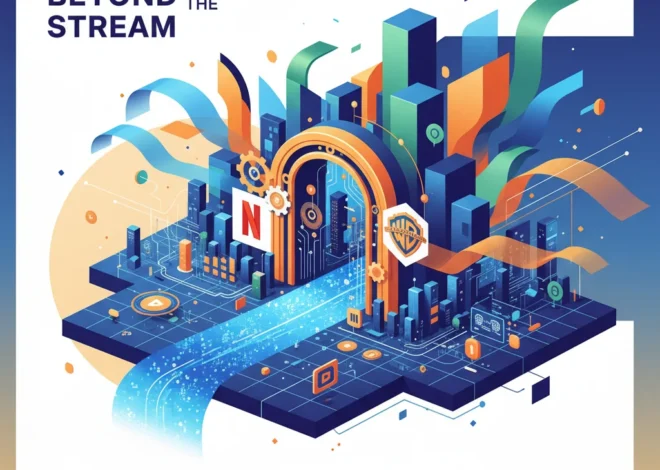
Anatomy of a Scare: Deconstructing the Recent US Banking Jitters and the Market’s Resilient Rebound
The financial world held its collective breath. In a dizzying turn of events, what began as tremors within a few US regional banks quickly threatened to become a full-blown earthquake, sending shockwaves through the global stock market. Investors, spooked by the ghosts of 2008, reacted swiftly, triggering a sharp sell-off that wiped billions off market capitalizations. Yet, almost as quickly as the panic set in, a fragile calm returned, and shares began a tentative recovery. This recent episode of market volatility, stemming from problems at two US regional banks, serves as a critical case study in the interconnectedness of modern finance, the psychology of investing, and the immense power of regulatory intervention.
But what really happened behind the headlines? Was this a near-miss of a systemic catastrophe or an overblown reaction to isolated incidents? In this deep dive, we will dissect the root causes of the banking scare, analyze the rapid response from regulators, and explore the crucial lessons for investors, business leaders, and anyone with a stake in the global economy.
The Cracks Appear: Unpacking the Genesis of the Crisis
The crisis didn’t materialize out of thin air. Its seeds were sown in the preceding years of historically low interest rates, followed by one of the most aggressive rate-hiking cycles in modern history by the Federal Reserve to combat soaring inflation. This dramatic shift in monetary policy created a hidden vulnerability on the balance sheets of many financial institutions.
Here’s the simplified breakdown: During the era of low rates, banks, including Silicon Valley Bank (SVB) and Signature Bank, loaded up on long-term government bonds and mortgage-backed securities. These were considered ultra-safe assets. However, as the Fed hiked rates, the value of these existing, lower-yielding bonds plummeted. On paper, this created massive “unrealized losses.” As long as the banks didn’t have to sell these bonds, the losses remained theoretical. But if a bank needed cash quickly—a scenario known as a liquidity crunch—it would be forced to sell these assets at a steep loss, crystallizing the paper losses and eroding its capital base.
SVB, with its highly concentrated client base in the tech and venture capital world, was uniquely vulnerable. When the tech sector began to cool and startups started drawing down their deposits en masse, the bank was forced to sell a portion of its bond portfolio at a significant loss to meet withdrawal demands. Its announcement of this loss, coupled with a plan to raise fresh capital, acted as a starting pistol for a modern-day bank run, fueled by the speed of digital communication and financial technology.
The Digital Bank Run: A 21st-Century Phenomenon
Unlike the bank runs of the Great Depression, which saw lines of people snaking around city blocks, this one happened at the speed of light. Venture capitalists advised their portfolio companies to pull their money, and messages spread like wildfire across social media and private group chats. With mobile banking apps, depositors could move millions of dollars with a few taps on their smartphones. This digital contagion demonstrated a new paradigm of risk for the banking sector, one where sentiment and information (or misinformation) can drain a bank of its liquidity in hours, not days.
The Farage Threat Verdict: Why Political Risk is Now a Core Metric for Every Investor's Portfolio
Systemic Risk and the Swift Regulatory Backstop
The collapse of SVB, followed shortly by the failure of Signature Bank, raised the terrifying specter of contagion. The fear was that depositors at other regional banks would panic, starting a domino effect that could cripple the entire financial system. This is what economists refer to as “systemic risk.” To prevent this, US regulators intervened with overwhelming force over a single weekend.
The Federal Deposit Insurance Corporation (FDIC), the U.S. Treasury, and the Federal Reserve announced a series of extraordinary measures:
- Full Deposit Guarantees: In a landmark move, regulators announced they would make all depositors at both SVB and Signature Bank whole, even those with balances exceeding the standard $250,000 FDIC insurance limit. This was a crucial step to restore confidence and halt the panic.
- The Bank Term Funding Program (BTFP): The Fed launched a new emergency lending facility. It allowed banks to borrow cash against their US Treasury and other high-quality assets at their full face value, not their depressed market value. This elegantly solved the “unrealized losses” problem, removing the need for banks to sell their bond portfolios at a loss to meet liquidity needs.
These actions, while controversial, were decisive. They effectively drew a line in the sand, signaling to the markets that the government would not allow a cascading failure of the banking system. The initial sell-off was triggered by fear, but the market’s subsequent recovery was a direct response to this powerful regulatory intervention (source).
A Tale of Two Tiers: Market Reaction and Sector Divergence
In the aftermath of the regulatory announcements, the stock market began to differentiate between perceived winners and losers. The market’s behavior provided a fascinating glimpse into investor psychology and risk assessment during a crisis.
Below is a simplified look at how different banking segments were impacted during the peak of the scare:
| Banking Segment | Immediate Market Impact | Underlying Investor Rationale |
|---|---|---|
| Large, Systemically Important Banks (e.g., JPMorgan, Bank of America) | Initial dip, followed by a strong recovery. | Seen as “too big to fail” and beneficiaries of a “flight to safety” as depositors moved cash from smaller banks. Their diversified business models and stricter regulatory oversight were viewed as a source of strength. |
| Mid-Sized and Regional Banks | Massive sell-off, with some bank stocks losing over 50% of their value. | Feared to have similar balance sheet vulnerabilities to SVB (unrealized losses, concentrated depositor bases). Investors worried about their ability to withstand further deposit outflows. |
| Fintech & Banking-as-a-Service (BaaS) | High volatility and uncertainty. | Many fintech companies relied on banking partners like SVB and Signature Bank for their core operations, exposing the interconnectedness and potential fragility of the fintech ecosystem. |
This divergence underscores a key theme: in times of uncertainty, capital flows towards perceived safety. The crisis, paradoxically, may have strengthened the hand of the largest financial institutions while prompting a painful but necessary re-evaluation of risk across the regional banking landscape.
The Investor's Lexicon: Decoding the 8 Core Concepts Driving Today's Economy
Long-Term Implications: From Regulation to Decentralization
The tremors from this event will be felt for years to come, reshaping the landscape of finance, regulation, and technology. Investors and business leaders must pay close attention to several key developing trends.
1. The Regulatory Pendulum Swings Back
Expect a renewed push for tighter financial regulation, particularly for mid-sized banks. The debate will center on whether post-2008 Dodd-Frank regulations were rolled back too far for banks in the $50-$250 billion asset range. Discussions around stricter liquidity requirements, more rigorous stress testing, and a re-evaluation of how unrealized losses are accounted for are already underway. The era of lighter-touch regulation for regional banks is likely over.
2. A New Chapter for Interest Rate Policy
The banking scare complicated the Federal Reserve’s mission. It found itself fighting a two-front war: one against inflation and another against financial instability. While the Fed continued to raise rates to cool the economy, the banking stress likely tempered the pace and scale of its hikes. This event serves as a stark reminder that monetary policy doesn’t operate in a vacuum; it has profound and sometimes unpredictable effects on the stability of the financial system. This interplay is a core concept in modern economics.
3. The Case for Blockchain and DeFi Gets Louder
Interestingly, the crisis in traditional finance (TradFi) prompted renewed interest in the world of decentralized finance (DeFi) and blockchain technology. Proponents argued that the transparency, self-custody, and decentralized nature of blockchain-based systems could mitigate the risks seen in the banking crisis. The argument is that with DeFi, there are no opaque balance sheets to worry about or centralized institutions that can be “run.” While the DeFi space has its own significant challenges—including extreme volatility, security risks, and a lack of user-friendly interfaces—the banking scare has undeniably provided it with a powerful real-world use case to present to a skeptical public. The conversation around the role of blockchain in the future of finance just became much more relevant.
Conclusion: Navigating the Aftershocks
The recent US banking scare was a potent stress test for the global financial system. It revealed significant vulnerabilities created by a rapid shift in the interest rate environment and demonstrated the terrifying speed at which confidence can evaporate in the digital age. The swift and powerful response from regulators successfully contained the immediate contagion, leading to a market recovery that many found surprising (source).
For investors, the key takeaway is not to panic, but to be prepared. This event reinforces timeless principles: the importance of diversification, the folly of chasing yield without understanding the associated risks, and the need to maintain a long-term perspective. While the immediate crisis has passed, the aftershocks will continue to influence regulatory policy, central bank decisions, and the ongoing evolution of financial technology. Staying informed and understanding the deep-seated forces shaping our economy is no longer just an advantage for successful investing—it is a necessity.


